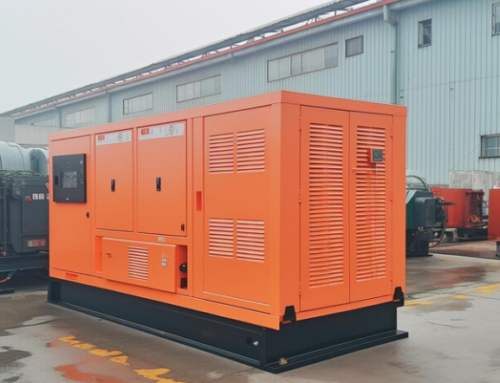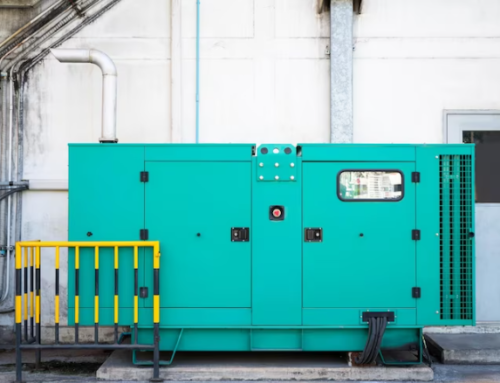There was a time when your fridge just kept things cold, your lights turned on with a switch, and your thermostat sat quietly on the wall. But now? Your appliances have opinions and they’re not afraid to share them.
Your refrigerator pings you when you’re low on milk. Your washer texts you when the cycle’s done. Your thermostat politely suggests it can save you a few dollars if you trust it with your comfort settings. Suddenly, your home feels less like a space you live in and more like a team of assistants working behind the scenes.
We’re officially living in an age where our appliances talk back and it’s surprisingly exciting.
Let’s dive into how smart technology is changing the way we “listen” to our homes, what’s great about it, where it’s heading, and why this new era of connected living might just be the most human yet.
How Do Smart Home Appliances Communicate With Each Other?
Ever wonder how your coffee maker knows when your alarm goes off, or how your lights dim automatically when your TV turns on? That’s the magic of connectivity—the invisible web that ties all your devices together.
1. The Language of Smart Homes
Smart home devices communicate primarily through wireless protocols like Wi-Fi, Bluetooth, Zigbee, and Z-Wave. These act as digital translators, allowing gadgets from different brands and purposes to share data and coordinate actions.
For example:
- Your smart thermostat might use Wi-Fi to sync with your smartphone app.
- Your smart bulbs might use Zigbee to connect with a central hub like Alexa or Google Home.
- Your smart plugs and sensors might bridge both, creating a chain of communication that keeps everything in sync.
In short, your home is now a mini-network—one where every appliance can “talk” to another through these wireless channels.
2. The Role of Hubs and Assistants
Smart home hubs like Amazon Echo, Google Nest Hub, or Samsung SmartThings act like interpreters. They listen to your voice commands or app inputs and then tell your devices what to do.
Say you tell Alexa, “Good morning.” Your hub might trigger several actions at once:
- The coffee maker starts brewing.
- Your lights gradually brighten.
- The thermostat adjusts to a comfortable temperature.
- Your favorite playlist begins to play.
Behind that simple command, dozens of micro-conversations happen between devices in milliseconds. It’s coordination at a level your pre-smart home could only dream of.
3. Cloud and Machine Learning Integration
Most modern devices connect to cloud servers, where data from millions of homes helps fine-tune performance. This means your home isn’t just connected—it’s constantly learning.
So, yes, your dryer does know that you always choose “delicate” mode for your sweaters. And it’s probably quietly adjusting its default settings to match your habits.
What are The Benefits of Having Connected Smart Devices at Home?
At first glance, the idea of a “talking toaster” or “texting refrigerator” sounds unnecessary until you experience how seamlessly it can simplify your day.
1. Convenience on Autopilot
Smart tech turns routine tasks into background processes. You no longer have to remember to turn off the lights or adjust the thermostat before leaving. Your devices can do it automatically.
- Smart locks let you check if you locked the door—right from your phone.
- Voice assistants can add groceries to your list mid-conversation.
- Smart ovens preheat as you drive home.
It’s like having an extra pair of hands that never forgets the little stuff.
2. Energy Efficiency and Cost Savings
Connected homes aren’t just convenient—they’re efficient. Your smart thermostat learns when you’re home or away and adjusts temperatures accordingly, cutting down on wasted energy.
- Smart lighting can dim or turn off based on occupancy sensors.
- Smart appliances can run during off-peak hours to save on energy bills.
- Water monitors can detect leaks early, preventing costly damage.
That’s not just “smart”—that’s eco-friendly living with real savings.
3. Safety and Peace of Mind
From motion sensors to smoke detectors that send instant alerts to your phone, smart devices can help protect what matters most.
- Cameras give you a live look at your home from anywhere.
- Smart plugs can turn off high-risk appliances remotely.
- Leak detectors notify you the moment moisture is detected near your water heater.
Connected tech gives you the ability to keep an eye (and ear) on your home—even when you’re miles away.
4. Customization That Fits You
Smart homes adapt to you. Morning person? Your blinds open with sunrise. Night owl? Your lights stay dim until noon. Whether it’s music, lighting, or temperature, your home molds itself around your preferences like a living, learning companion.
How is Artificial Intelligence Improving Household Appliances?
If connectivity made our homes smart, AI is making them intuitive.
Artificial intelligence is the quiet genius behind modern appliances—it’s what allows them not just to respond, but to anticipate your needs.
1. Predictive Maintenance
Your dishwasher now knows when it’s tired. Seriously. AI algorithms monitor usage patterns and internal data to detect when a part is wearing out or when a cycle isn’t running efficiently. Some even send alerts before a breakdown occurs.
2. Smarter Cooking and Cleaning
- Smart ovens use AI to recognize what you’re cooking and automatically adjust temperature and time.
- Robotic vacuums map your home, learn your furniture layout, and clean more efficiently with every run.
- Smart refrigerators can identify what’s inside and suggest recipes based on your inventory.
Your appliances aren’t just doing their jobs—they’re becoming household collaborators.
3. Voice and Emotion Recognition
AI is also refining how we interact with technology. Devices are learning to interpret tone and context. For instance, if you say, “It’s too cold in here,” your thermostat can infer your intent and raise the temperature without needing a command like “Set temperature to 72.”
4. Learning Your Lifestyle
Over time, AI notices your habits—when you wake up, when you cook, when you relax—and adjusts accordingly. It’s personalization at a level that feels almost invisible.
Imagine your home preparing itself for your routine before you even think about it. That’s not the future anymore—it’s happening now.
What Challenges Come With Using Voice-Activated Smart Technology?
Of course, every technological leap comes with its own growing pains. As our homes become smarter, they also raise new questions about convenience, privacy, and control.
1. Privacy Concerns
When your devices are always listening, it’s fair to wonder who else might be. Voice assistants process data through cloud servers, meaning snippets of conversation could be analyzed to improve systems. While companies have tightened security, it’s important to review your privacy settings and manage what data gets stored.
2. Compatibility Issues
Not all devices play nicely together. Mixing brands and ecosystems can sometimes feel like forcing two coworkers who barely get along to share a cubicle. Choosing devices that operate on the same platform (like Google Home, Alexa, or Apple HomeKit) can reduce headaches.
3. Over-Reliance on Connectivity
If your Wi-Fi goes down, so does your “smart” home. A good backup plan (and a few manual switches) never hurts.
4. The Learning Curve
While most systems are user-friendly, there’s still an adjustment period. Setting up automations, learning voice commands, and managing apps can feel overwhelming at first—but once you get the hang of it, it’s addictive in the best way.
5. The “Always Listening” Effect
Some people simply find it unsettling that their devices are always waiting for a cue. It’s a valid concern—and one that continues to drive conversations around ethics and data handling in smart technology.
The trick is balance: using the tech to enhance your lifestyle without letting it overstep your comfort zone.
Let Your Home Speak Smartly with Starnes Electric LLC
At Starnes Electric LLC, we believe technology should make your home work for you, not the other way around. Whether you’re upgrading to smart lighting, installing connected thermostats, or integrating voice-activated systems, our team brings the expertise to make your setup seamless and secure.
We don’t just wire your devices; we help your home communicate clearly, efficiently, and intelligently.
Ready to give your home a voice that works smarter, not louder? Let’s bring your connected living vision to life.




